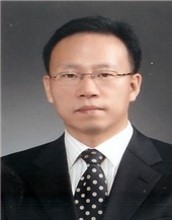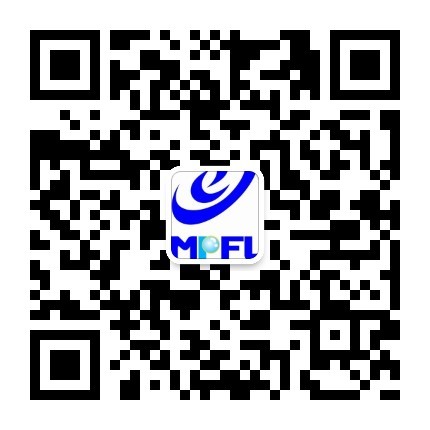应实验室副主任王金华教授邀请,韩国釜庆国立大学机械工程系Jeong Park教授将于11月16日访问实验室,并为师生做两场丰富的学术报告,请实验室师相关研究生积极参加。
报告人:Prof. Jeong Park
时 间:2018.11.16 (Fri),9:00-12:00am
地 点:北二楼1402
邀请人:黄佐华 教授,王金华 教授
报告一: Self-excitations in Laminar Lifted Jet Flames
Abstract:
Laminar lifted jet flames have been studied for abound three decades, in that it can be a target field to extend laminar stretched flamelet concept in partially premixed turbulent flames. Laminar lifted flames are stabilized at a location along a stoichiometric contour where edge flame speed balances to local flow speed. Edge flame speed can be a functional dependency on mixture strength, Lewis number, scalar dissipation rate (thereby fuel concentration gradient), strain rate, heat release rate, heat losses, buoyancy effects and so on. If one (or more) of them is modified, the edge flame can be receded or advanced, resulting in self-excitations in laminar lifted jet flames. In this presentation, the background of tribrachail flame is first introduced, and how we can approach this combustion field theoretically is explained. Several examples on such self-excitations (published in Journals) are discussed.
报告二:Flame Spread Behaviors over Electrical Wire with Applied Electric Fields
Abstract:
Wire fire is one of key issues in space development since the accident of Apollo 1 in 1967. In an electrical wire, unexpected arcing, short circuit, and/or overheating of the wire can lead to an ignition of combustible insulation materials and subsequently a spread of fire. Electrical wire fires are also one of the main causes of fires in buildings and households, as well as in closed environments such as aircraft and spacecraft. In this regard, the fundamental characteristics of wire fires have been studied extensively, considering such parameters as insulation material, material thickness, external heating, ambient flow, and pressure. Fire safety in space has also been studied extensively considering gravity effect. Electrical wires for use in spacecrafts are tested using the NASA fire safety code, adopting the upward flame spread over an inclined electrical wire under the ambient conditions. However, this code does not consider the effect of electric field applied to the wire. When an electrical wire catches on fire by an electrical short, the wire can still be under the influence of electric fields as an open circuit. In such cases, charged particles generated through chemi-ionization and subsequent ion chemistry in the reaction zone of the spreading flame can be influenced by the electric field via the Lorentz force. The transfer of momentum from accelerated charged particles to neutral molecules could generate a bulk flow by the ionic wind effect. However, a limited number of studies on the effect of electric fields on spreading flame over electrical wires has been conducted. In this presentation, flame spread behaviors over electrical wire with applied electric fields are introduced. Several interesting phenomena are discussed, such as a fuel-vapor jet, an internal circulation of molten PE due to Marangoni convection, a dripping of molten PE, an electrospray, a di-electrophoresis, and so on.
报告人介绍:

Short Bio:
Dr. Jeong Park holds a B.S. degree in Mechanical Engineering from the Seoul National University (1987) and M.S. (1990) and Ph.D (1995) degrees in Mechanical Engineering from the Korea Advanced Institute of Science and Technology. He was a post doctoral research associate at the Korea Advanced Institute of Science and Technology (1997-1999) and a guest researcher at the Tohoku University in Japan (1997-1998). He then joined the Korea Aerospace Research Institute as a senior researcher (1999-2000). He taught and studied the general area of flame structure in combustion field and rocket propulsion system (2000-2006) at Sunchon National University. He was a guest scientist at National Institute of Science and Technology in U.S.A. (2004-2005). He joined the Department of Mechanical Engineering at Pukyong National University in 2007. His research interests are as follows: 1) flame structure and microgravity combustion, 2) suppression of fire, 3) self-excitations in laminar lifted jet flame, 4) flame extinction in laminar counterflow flames, 5) flame propagation speed, Markstein length, cellular instability in 1D expanding spherical premixed flames, 6) electric field and plasma assistant combustions, 7) flame ball, and 8) flame spread over electrical wire. He was the recipient of Excellent Researcher of KOSEF (1997) and Young Investigators Awards at ASPACC-99. He has authored over 70 publications in SCI Journals and over 70 publications in Domestic Journals. He was an editorial board (2002-2009), an editorial director (2010-2013), and an associate editor (2010-2013), and is now an editor (2016-present) and a vice president (2014-present) in Korean Society of Combustion Engineers (KOSCO). He is also an editorial board of International Journal of Spray and Combustion Dynamics (IJSCD, 2008-present). He was an associate editor of the transaction B (2010-2016) and a business director (2014-2015) in The Korean Society of Mechanical Engineers (KSME). He was a planning director (2008-2013), and is now a vice president (2014-president) in Korean Society of Microgravity (KSM). He is now an associate editor in Journal of Mechanical Science and Technology (JMST, 2013-present).
